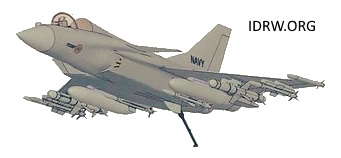SOURCE: DEEPAK HILORI/ FOR MY TAKE / IDRW.ORG


The recent approval by the Cabinet Committee on Security (CCS) for the development of the Advanced Medium Combat Aircraft (AMCA) marks a significant milestone in India’s quest for self-reliance in fighter jet technology. However, the high cost of the AMCA program, coupled with the uncertainties surrounding the TEDBF program for the Navy, raises questions about India’s overall fighter jet development strategy.
With a budget of ?15,000 crore, the AMCA program aims to develop a fifth-generation fighter jet for the Indian Air Force (IAF). The IAF has already committed to procuring 120 AMCA jets in both MkI and MkII variants, reflecting its confidence in the project’s potential.
The TEDBF program, intended to develop a 4.5-generation fighter jet for the Indian Navy, faces challenges. While its estimated cost of ?14,000 crore is comparable to the AMCA, the Navy’s current order book only stands at 45 units. This limited order raises concerns about the program’s financial viability, especially if the Navy doesn’t acquire additional aircraft carriers, like the proposed 65,000-ton IAC-III.
ADA, the developer, proposed the ORCA variant of the TEDBF for the IAF. This lighter version, designed for the Air Force’s needs, could have potentially fulfilled the IAF’s requirement for over 100 fighter jets currently under the MRFA tender. However, the IAF’s lack of interest in ORCA leaves the MRFA open to foreign competitors.
The high investment in the TEDBF program, coupled with the IAF’s disinterest in ORCA, raises questions about the program’s overall security implications. A financially unsustainable TEDBF program could limit the Navy’s fighter jet options, potentially compromising its operational capabilities.
India’s fighter jet development strategy seems to be at a crossroads. While the AMCA program holds promise for the future, the viability of the TEDBF program requires careful consideration. A more holistic approach, exploring synergies between the Navy and Air Force requirements, could lead to a more cost-effective and strategically sound solution.